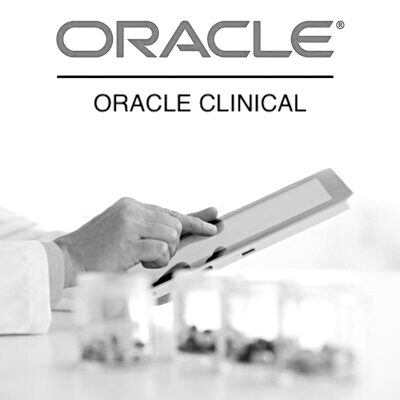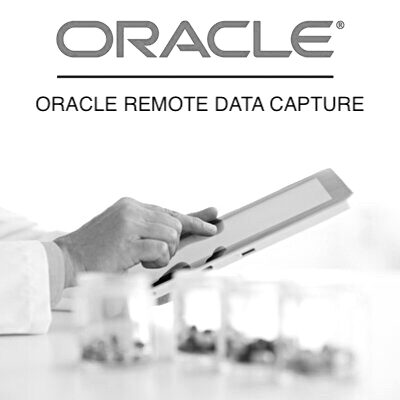Electronic Data Capture is one of the new technologies have impacted the process of clinical data management and have been well accepted to ensure a more efficient and effective method of data collection.
Table of Contents
Electronic Data Capture Overview
The CDISC defines Electronic Data Capture (EDC) as:
“Collection or acquisition of data as permanent electronic records, with or without human interface (such as using data collection systems/applications that are modem based, web based, OCR and OMR based or involve audio text, interactive voice response, graphical interfaces, clinical laboratory interfaces or touch screens”
In this context permanent refers to the fact that any changes made to clinical data are recorded via an audit trail.
As such there are several Electronic Data Capture tools that may be used. These include:
- Internet
- IVRS
- Pen Tablet
- PDAs
- Fax Systems
- OCR and OMR Systems
- eCRFs
Let us have a look at each one of them.
Internet
The most common and sought after Electronic Data Capture tool used to supplement Electronic Data Capture technology is the Internet due to its increased availability and common usage. The EDC systems allow for edit checks to be run on the data when it is being entered by the investigator at the site into the centralized database. This prevents inaccurate, incomplete and inconsistent data to be reported by the site/investigator as the validation checks are being executed as the investigator is entering the data, thus preventing him to enter incorrect values. Sometimes few of the checks may be designed to be executed while the investigator is entering the data in real time, however some may be planned to run in batches.
Though the whole idea of EDC is to eliminate transcribing the data on the CRF and then entering the transcribed data again into the database, yet this field has been hobbled up by traditions of using paper in clinical trials and thus even today the data is first entered on a piece of paper, then transferred to a worksheet after which the actual process of online entry into the database begins at the site. Even here there are issues that site personnel are not necessarily skilled at data entry. The result of this is that they have to be trained and data entry is slow and expensive
All this suggests that though the technology has the ability to revolutionize drug development, but the underlying process need to be revamped to better fit in the technology being used. The sites need to have access to the internet, have computer available and have an IT infrastructure in place. The personnel need to be trained on using EDC systems.
Interactive Voice Response System (IVRS)
IVRS, which is another Electronic Data Capture system, is an interactive speech / touch pad menu driven system which allows remote data capture by taking the caller through a series of prompts and recording the responses through a telephone keypad. It allows real time capture of data and is maintenance free but has a limited interface. The IVRS is used in specific areas of data management and trial management such as patient randomization, reporting of adverse events, drug supply management and collecting patient diary information.
Pen Tablet
The pen tablet is an EDC tool of the future. It is a device that allows biometric data and signature of the investigator to be captured while linking to the electronic copy of the form that the investigator signs. The inking tip of the pen also makes actual signatures on the respective paper document.
Personal Digital Assistants (PDAs)
PDAs are Electronic Data Capture tools used as a replacement for paper diaries provided to the subject though it may or may not collect data in real time, it allows syncing of the data to the database when the patient comes in for his visit.
OCR/OMR
Finally OCR/OMR (Optical Character Recognition/Optical Mark Recognition) software together used with a scanning device, make up a good Electronic Data Capture system. This allows for paper based CRFs to be scanned and then uploaded into a centralized repository so that the images of these CRFs are available at all data management sites in a global trial. These allows for quicker access to the CRFs for data entry, and reduces time and cost.
Also the OCR and OMR software sometimes is used to do the first pass data entry. The OCR component reads the text in the CRF and uploads the data into the respective fields in the database, while the OMR component reads the checkboxes, barcodes etc and translates them into textual or implied data in the database. For these systems to work the way they do they need to be integrated with the centralized database for optimal performance, so that the respective images of the CRFs can be pulled up for any data point in the database.
EDC systems
EDC systems have taken on paper based methods but their adoption depends on the trends of the industry. Also when pharmaceutical companies begin to feel that they would get a good return on their investment by adopting these systems and they begin to spend on its infrastructure at sites, EDC would then become a reality and paper based methods would be a history.
For a deep insight into the world of Clinical Data Management, subscribe to our Clinical Data Management Knowledgebase
Want a explore a career in Clinical Data Management? Join our Diploma in Clinical Data Management program and kick-start a career in Clinical Data Management and Oracle Clinical.
Already completed a program in clinical data management. Enhance your expertise on the Oracle Clinical software by pursuing our Oracle Clinical Fundamentals program. You can also subscribe for 24×7 access to the Oracle Clinical software for practice.




